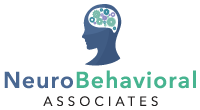Talking about suicide ideation is one of the most challenging conversations parents and educators may face. For families and professionals working with neurodiverse children, understanding how to approach this sensitive topic becomes even more important, as children with neurodevelopmental differences face increased risks for suicidal thoughts and behaviors. In this article, we will cover how to talk about suicide ideation as a parent or educator learning to navigate this challenging topic.
Understanding the Heightened Risk in Neurodiverse Children
Children with autism spectrum disorder, anxiety, and depression are at significantly higher risk for experiencing suicidal ideation. The combination of social challenges, sensory sensitivities, executive functioning difficulties, and mental health conditions creates a perfect storm that can lead to overwhelming feelings of hopelessness.
Understanding these risk factors doesn’t mean assuming every neurodiverse child will experience suicidal thoughts. Instead, this article is aimed at helping parents and educators understand the importance of proactive communication about mental health and safety.
Creating a Foundation of Open Communication
Before any crisis occurs, establishing a culture of open dialogue about emotions and mental health is essential. This means normalizing conversations about feelings, both positive and negative, and creating safe spaces where children feel comfortable expressing their inner experiences without judgment.
For neurodiverse children, this foundation becomes particularly crucial because they may struggle with emotional regulation, social communication, or identifying and expressing their feelings. Parents and educators should regularly check in with children about their emotional states, using language and methods that the child can understand. If you are not sure how to navigate this type of communication, a professional can help!
Recognizing Warning Signs
Being alert to warning signs of suicidal ideation is the first step in knowing when to have these difficult conversations. In neurodiverse children, these signs might include sudden changes in behavior, increased isolation, expressions of hopelessness, giving away belongings, or direct statements about wanting to die or not being around anymore.
However, warning signs in neurodiverse children can sometimes be subtle or masked by existing behavioral patterns. A child with autism might become more rigid in their routines, while a child with ADHD might show increased impulsivity or risk-taking behaviors. Changes in sleep patterns, appetite, academic performance, or social withdrawal should all be taken seriously.
Having Productive Conversations
When the time comes to discuss suicide ideation directly, your approach matters! Choose a private, comfortable setting where the child feels safe and won’t be interrupted. Begin with gentle, open-ended questions that invite sharing rather than yes-or-no responses that might shut down communication.
Instead of asking “Are you thinking about hurting yourself?” try “I’ve noticed you seem really sad lately. Can you tell me more about what’s been going on in your mind?” This approach feels less threatening and allows the child to share at their own pace.
Essential Do’s and Don’ts
DO:
- Take any mention of suicide seriously, even if it seems attention-seeking
- Use calm, non-judgmental language
- Listen more than you speak
- Validate their feelings while emphasizing that suicide is not a solution
- Seek professional help
DON’T:
- Dismiss their feelings as “just a phase” or “attention-seeking”
- Promise to keep suicide ideation a secret
- Leave the child alone if they’re in immediate danger
Building Support Networks
No single person should handle suicidal ideation alone. Building a support network that includes mental health professionals, school counselors, trusted family members, and medical providers is essential. For neurodiverse children, this network might also include therapists and other specialists who understand their unique needs.
Ensure that all members of this support network are aware of the child’s neurodivergent traits and how these might impact their risk factors, communication style, and treatment needs.
Professional Resources and Next Steps
If a child expresses suicidal ideation, immediate professional intervention is necessary. This might include contacting a mental health crisis hotline, taking the child to an emergency room, or arranging for immediate evaluation by a mental health professional.
For neurodiverse children, seeking providers who understand neurodevelopmental differences is particularly important. These professionals can develop safety plans that account for the child’s unique strengths and challenges while providing appropriate therapeutic interventions.
If you’re concerned about a child’s mental health or need guidance on having these difficult conversations, contact NeuroBehavioral Associates today. Our team of specialists understands the unique challenges facing neurodiverse children and can provide the support and resources your family needs. Don’t wait, early intervention can make all the difference in a child’s life!
Resources:
- Attention Deficit Disorder Association. (2019). ADHD and suicide risk: What parents and professionals need to know.

